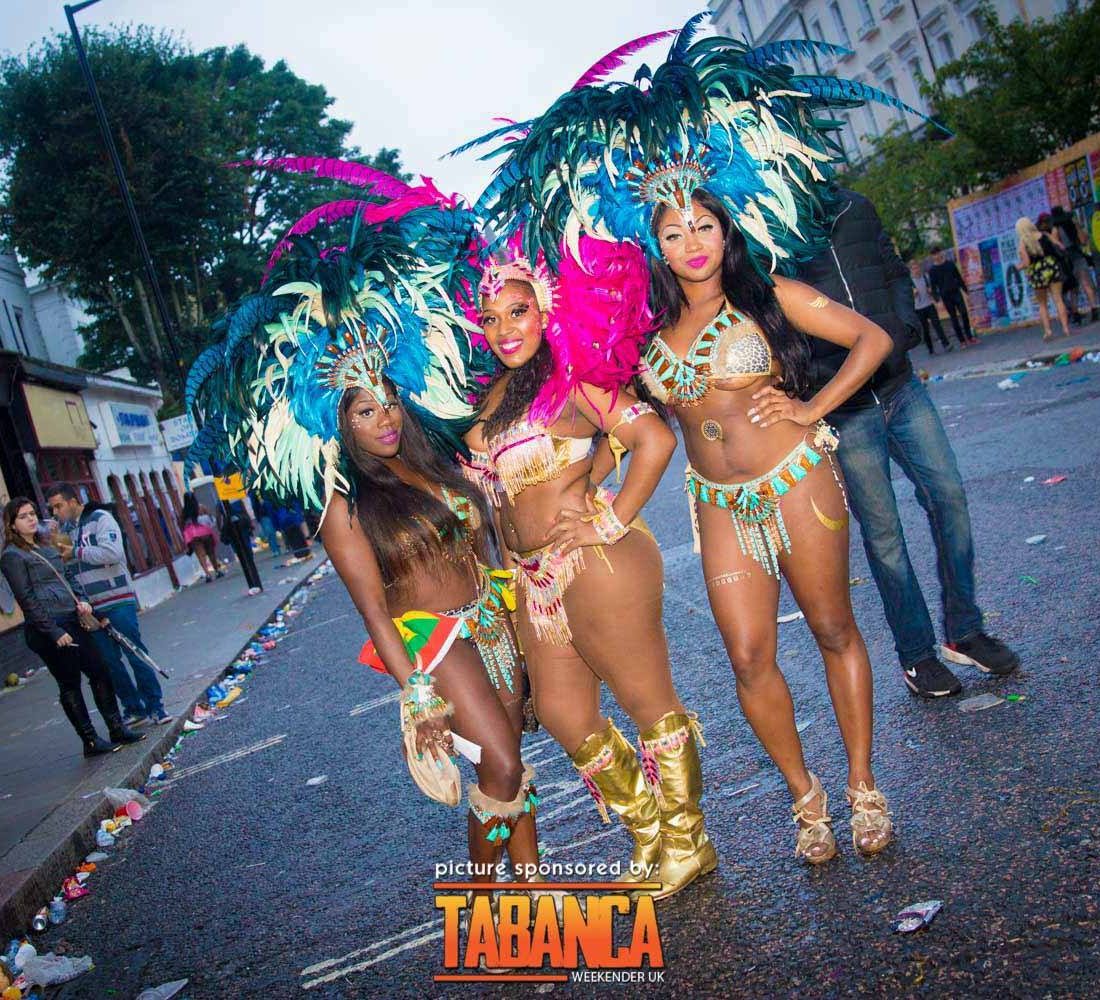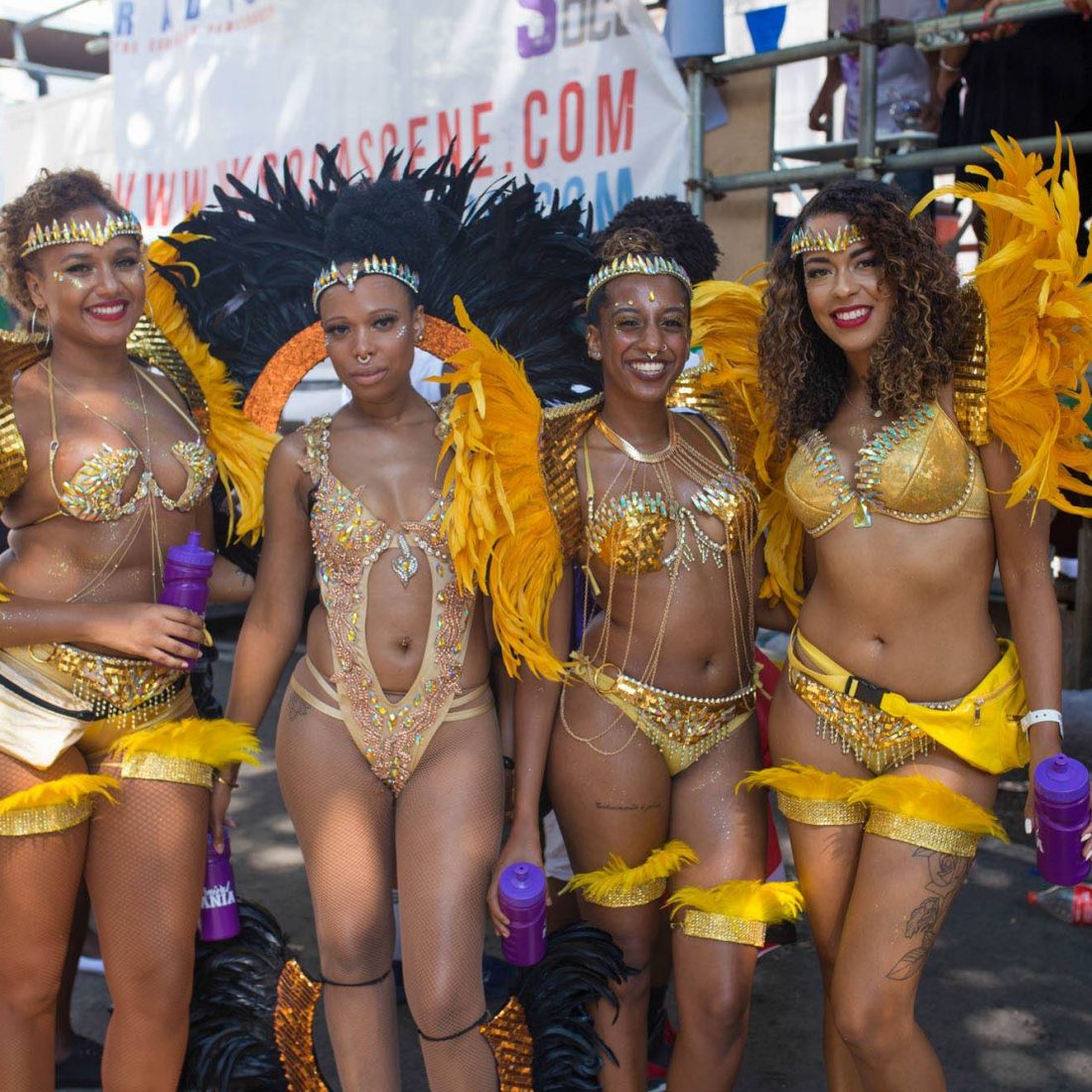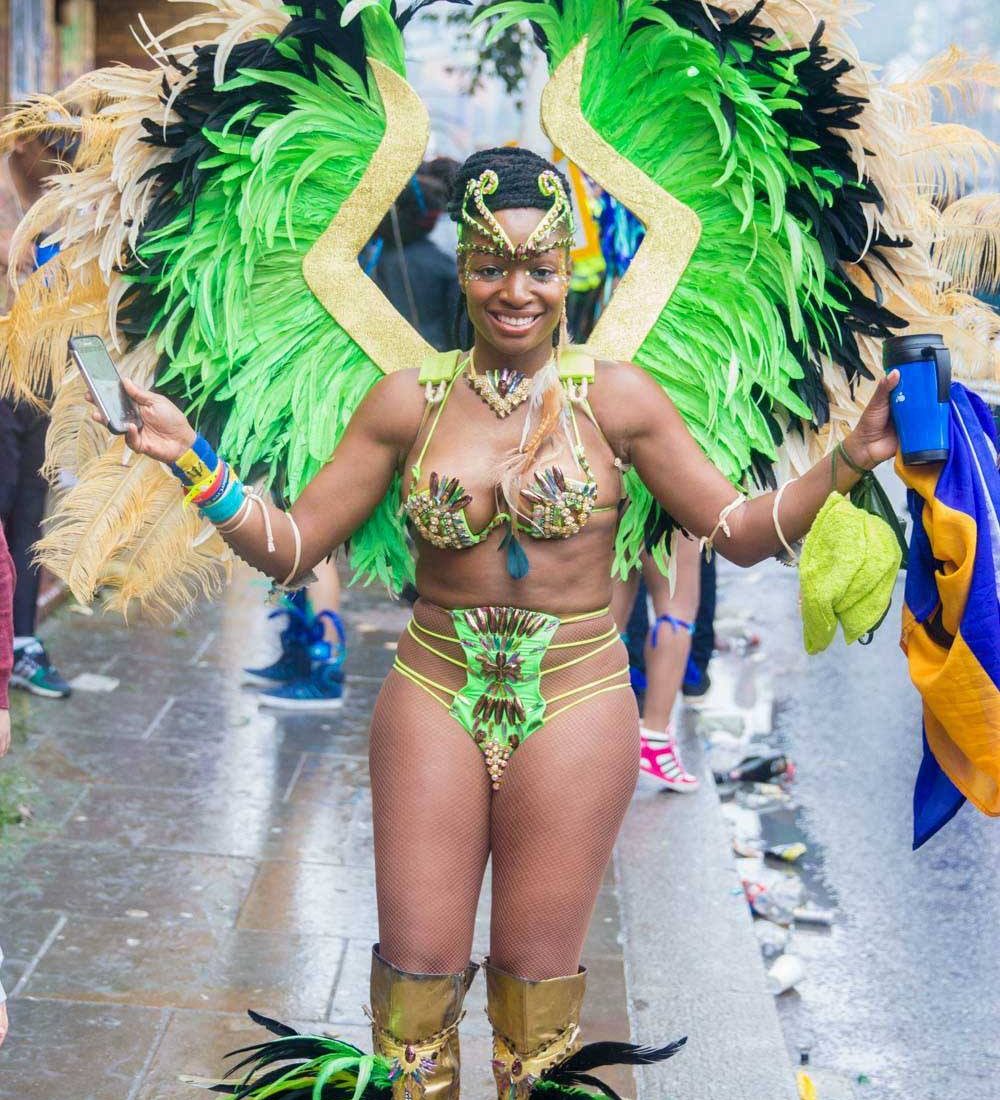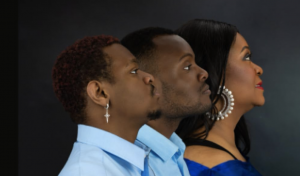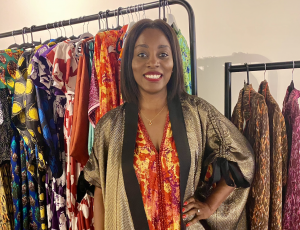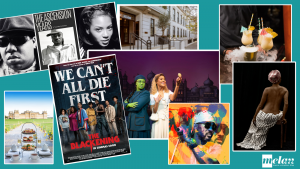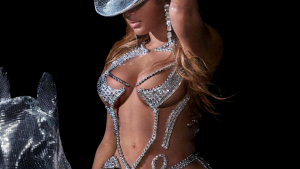On two days in August every year, thousands of women shed their conservative natures to hit the streets of London wearing what some may describe as mere strips of colourful fabric, sparkly sequins and feathers masking their modesty, all of course in celebration of Notting Hill Carnival.
Carnival lovers describe it as a time of liberation, freedom, artistic expression, acceptance, the uniting of people, an honouring of history and and an appreciation of culture. And the women, and men, of all shapes and sizes who participate in the processions, parade the streets fearlessly in their glorious costumes, losing themselves in the music whilst stirring emotions of joy, surprise, amusement, envy, pride and for a select few spectators, disgust.
Masks, colourful clothing and wigs have been commonplace in carnivals all over the world including in warmer climates like Trinidad and Tobago. To really understand how the costumes have evolved to what they are today, it’s useful to take a look at Brazil, which is home to the largest carnival in the world. Like most other carnivals, the artistic display of costumes is a fundamental feature in the Rio carnival yet as the price of material went up in the 1930s, the amount of material used was reduced. By the 1950s men started to come out bare chested this also coincided with the birth of the bikini in 1946 by Parisian designer Louis Réard. Despite holding on to the elaborate features of costumes such as large wire bent masks, collars and back packs, the actual fabric covering the bodies of female and male masqueraders depicted that less is more. By the 1980s men were wearing just as much sequins and feathers as women.
And of course by the 1990s, women’s attire and ownership and influence over what was appropriate became a fraught topic which completely liberated the female wardrobe and in the present day, women who are legally able to wear what they want, not of course without criticism from the general public.
There are some who argue that where the black woman is concerned, nudity is a natural and comfortable state often associated with the heat of Africa and the Caribbean and highlighted throughout illustrations of African history. However, there are some who are regard the public display of black nudity as an exploitation of privacy, oppressive, over sexualisation and continual objectification of black women.
It should be noted that women masqueraders are often heavily involved in their costume design and do their own DIY alterations to ensure they feel beautiful and comfortable whilst parading in the carnival. Women spend hundreds of pounds wearing what they view as art. And you best believe it takes courage to bare all at carnival!
There is also the view that women’s natural desire to look good while wearing their costumes also has a positive impact on their physical health through #PreCarnivalGymWorkOuts and emotional wellbeing #Confidence. Unfortunately, there are also some negative repercussions, for example some men think that a woman in carnival costume is extending an initiation to be touched (kmt), but aside from this perverse mentality, which needs to be addressed by the perpetrators and their counsellors, we certainly want to continue to see the display of beautiful, diverse and confident women in costumes at Notting Hill Carnival.

